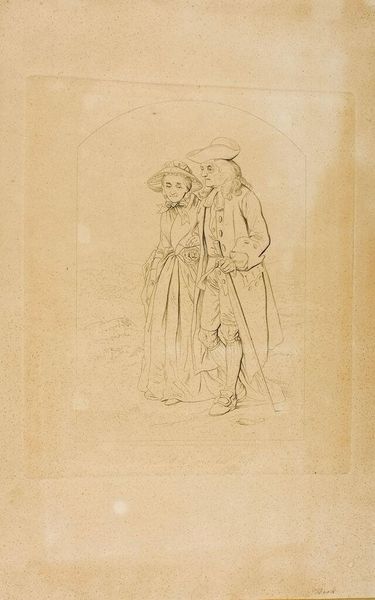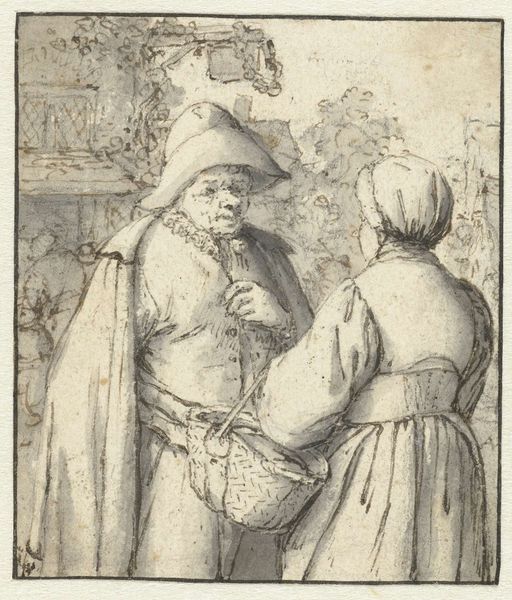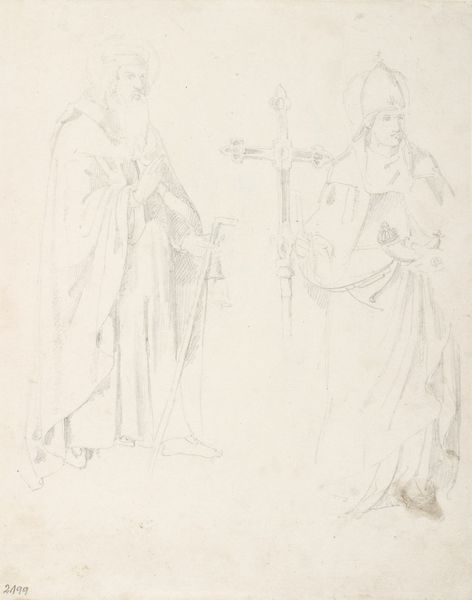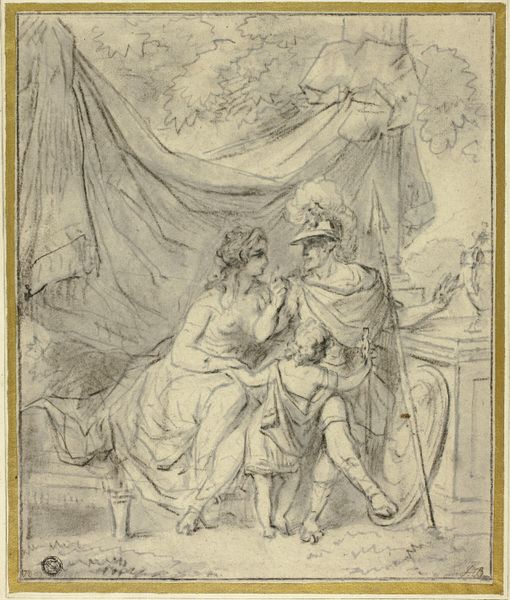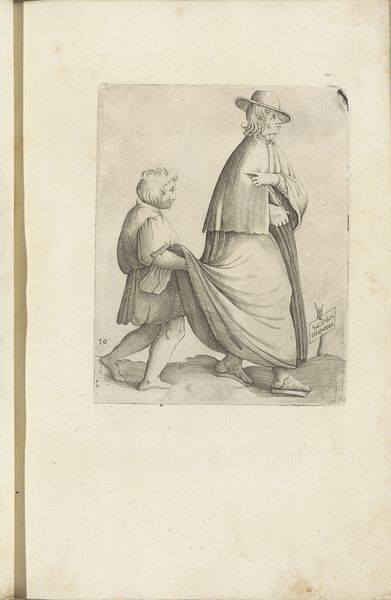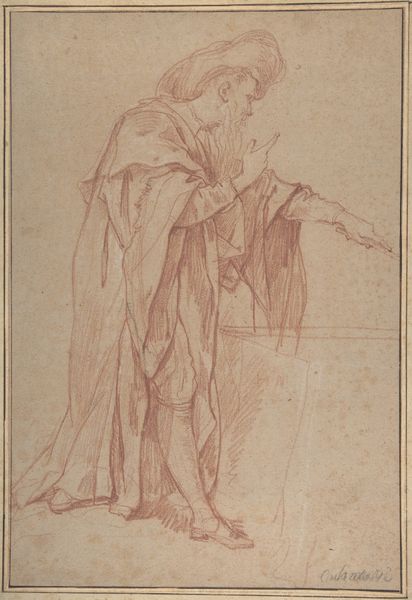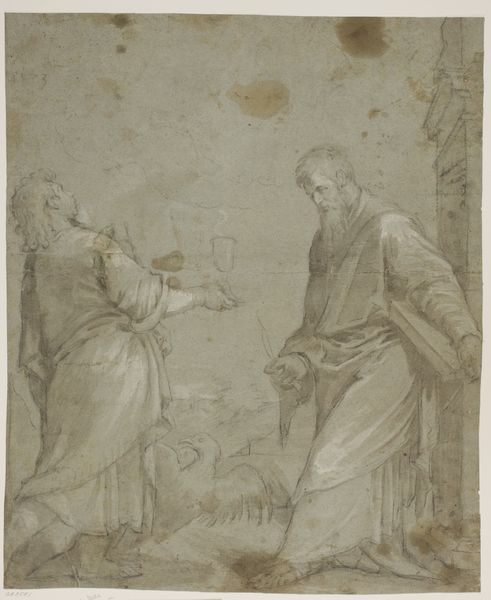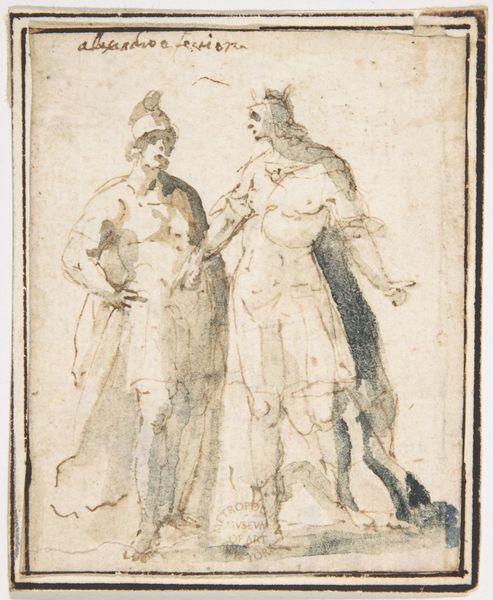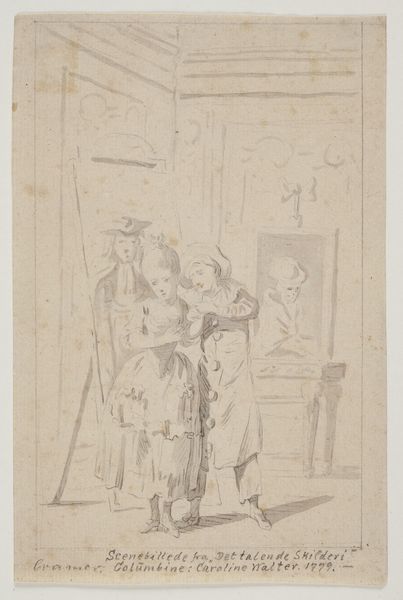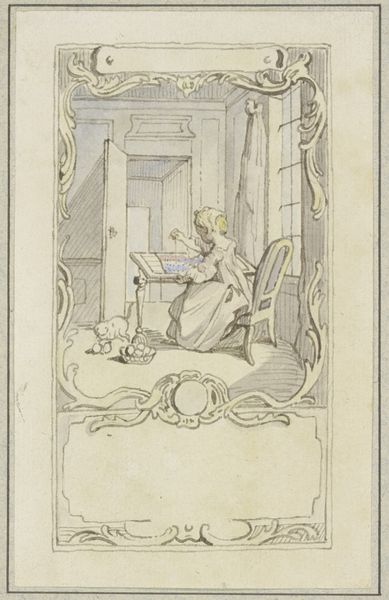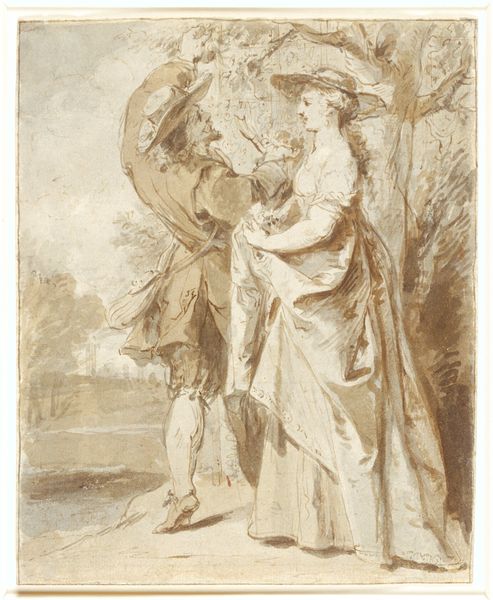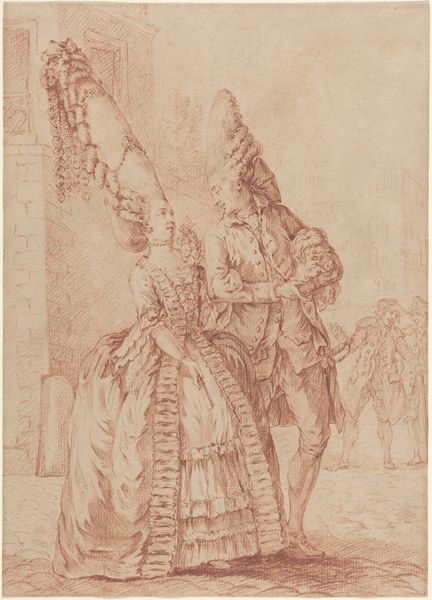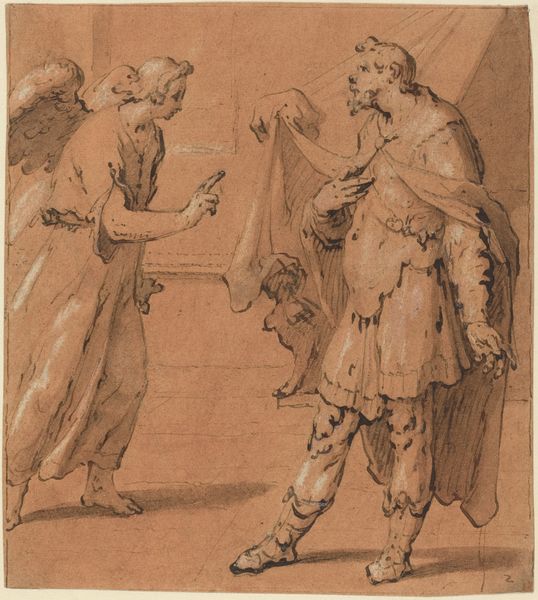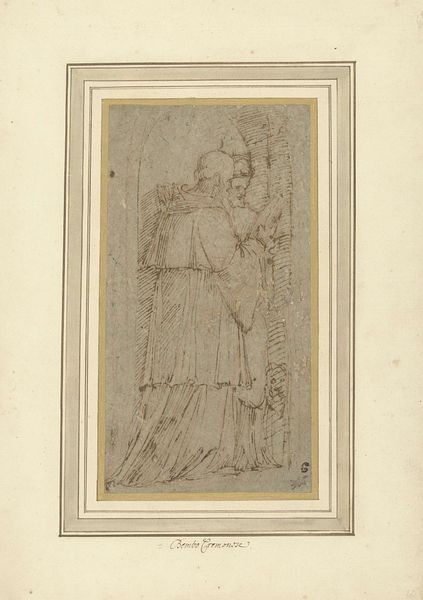
drawing, graphite
#
portrait
#
drawing
#
baroque
#
graphite
#
14_17th-century
#
history-painting
Copyright: Public Domain
Editor: This drawing, titled "Saints Cosmas and Damian," is attributed to Jacopo Vignali and is currently held at the Städel Museum. The figures are rendered in graphite. It feels quite ethereal and unfinished, somehow poised between a sketch and something more complete. What stands out to you in this piece? Curator: The drawing certainly possesses that transitional quality, doesn’t it? But, beyond technique, the enduring power lies in the symbolism embedded within. Notice how Vignali renders Cosmas with a book – an emblem of knowledge and scholarship – juxtaposed against Damian offering healing, symbolized by the tray of fruit. Doesn’t this remind you of the dualistic nature of early medicine—spiritual wisdom intertwining with physical cures? Editor: I hadn't considered the duality! So, is it accurate to say that even mundane objects like fruit can serve as potent cultural symbols? Curator: Precisely! Fruit, often depicted in art, signals fertility, healing, abundance, even paradise. Vignali invites us to consider the holistic well-being these saints represent – a unity of intellectual, spiritual, and physical health. How do you think that message resonated during the Baroque period? Editor: That's a good question. Perhaps it was a visual reminder during a time of religious and scientific upheaval? Curator: Perhaps. And it is a fascinating insight for our own time of upheaval as well. Even in a sketch, the emotional resonance of these symbols carries across centuries, offering us a glimpse into shared hopes and fears. Editor: It's amazing how a simple drawing can be so rich in cultural meaning. I’ll never look at fruit the same way again!
Comments
No comments
Be the first to comment and join the conversation on the ultimate creative platform.
